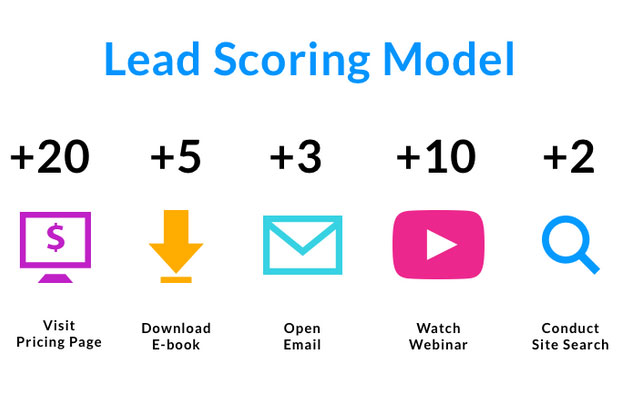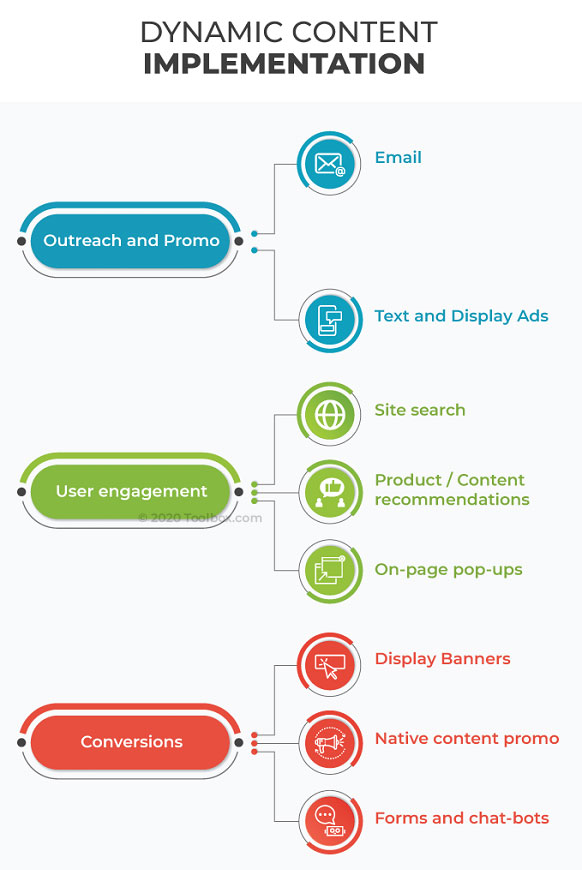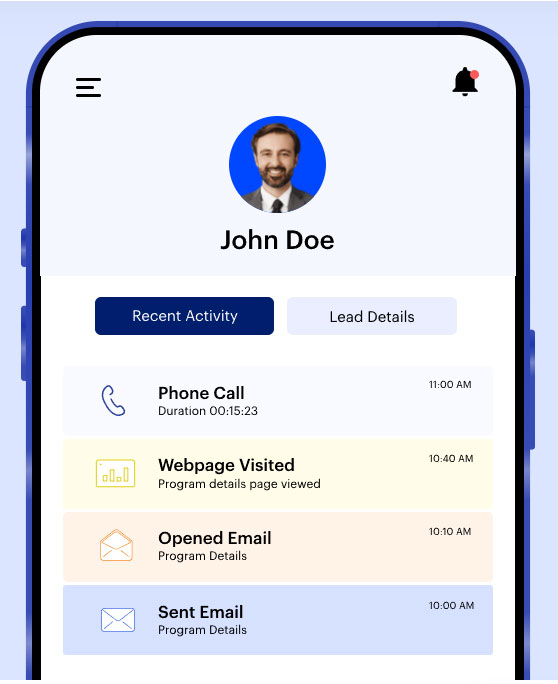Guest post by Eduard Klein.
Business process automation is, hands down, one of the best technological innovations to come along in decades. Humans have spent way too much time doing repetitive tasks that do not require our expertise. These tasks take time away from the value we could potentially be adding in our business.
Image credit: Mikael Blomkvist on Pexels
This also applies, of course, to B2B marketing. Ideally, marketers focus their time on performing high-impact tasks that need our knowledge, expertise, and experience. So, why not let B2B marketing automation take care of the rest?
Embracing automation is clearly the way forward. But how do make the best use of it (or get started, if you’re still stuck in manual processes)? What are the challenges you can expect? Which parts of marketing can you most profitably automate?
This post will answer those questions and more.
What is B2B Marketing Automation?
B2B marketing automation refers to the use of software and technology to automate and streamline marketing processes in a business-to-business (B2B) context.
It’s like having a super-efficient robot that can help your team handle all the repetitive marketing tasks and plan your marketing campaigns more efficiently. This means sending emails, posting on social media, and even sorting through leads can be done automatically (though a human should still be monitoring the output).
B2B marketing automation doesn’t just do the heavy lifting, it also digs deep into data, giving you insights into what’s working and what’s not. This means you can tweak your strategies to be more effective, ensuring your marketing efforts hit the bullseye every time.
What are the Benefits of B2B Marketing Automation?
B2B marketing automation helps maximize the efficiency of your marketing efforts in many ways:
- Higher CLTV: Marketing automation nurtures leads effectively, leading to stronger customer relationships and increased Customer Lifetime Value (CLTV).
- Reduced churn: Personalized follow-ups and timely engagement can reduce customer churn. This keeps your clients onboard longer.
- Better data collection and insights: Automation tools collect data at every touchpoint. You get deep insights that inform smarter business decisions.
- Higher efficiency and performance: By automating routine tasks, teams can focus on strategy and creative efforts. This makes your customer acquisition more efficient and helps boost overall marketing performance.
- Reduced costs: Automation reduces the need for manual efforts, cutting down on staffing costs and resource expenditures.
- Efficient lead management: Leads are scored and segmented automatically, ensuring timely follow-ups and higher conversion rates.
- Scalability: Automation allows businesses to scale their marketing efforts rapidly, without a proportional increase in effort or expense.
- Reducing human error: Automated systems minimize the risk of human error. The entire marketing approach becomes more consistent and error-free.
What are the Challenges of B2B Marketing Automation?
Like everything else, B2B marketing automation does come with its own set of challenges:
- Sales and marketing alignment: Aligning sales and marketing teams can be challenging, as both may have different goals and approaches to using automation tools.
- Complex integrations: As businesses grow, integrating marketing automation with other systems can become complex. It requires additional technical expertise to ensure smooth operation.
- Personalization at scale: Crafting personalized content that resonates with each segment of your audience becomes more challenging as your business scales (which, again, is why humans can’t be taken entirely out of the loop).
- Avoiding spam: There’s a fine line between regular communication and spamming. Businesses need to find the right balance to avoid overwhelming or annoying potential clients.
- Data management: Collecting and managing a large volume of data for effective automation can be daunting, especially while maintaining data privacy and compliance
- Training and adoption: Ensuring your team is fully trained and on board with new automation tools can be a hurdle. This may affect the overall adoption rate.
Despite these challenges, B2B marketing automation remains a powerful approach for businesses to streamline their marketing efforts and drive growth. It is important to understand these challenges so you can address them head-on.
Eight B2B Marketing Automation Strategies to Maximize Efficiency
With an understanding of the benefits and challenges of B2B marketing automation, let’s dive deep into some strategies you can use to maximize efficiency:
1. Leverage Lead Scoring and Grading
Lead scoring and grading are the cornerstone of effective B2B marketing automation. You can use marketing automation to generate highly qualified leads and then score them automatically. These enable businesses to prioritize and pursue the most promising leads.

Image credit: S2W Media
Automating lead scoring involves assigning numerical values to leads based on their actions and engagement level. Using this type of automation, you can identify those most likely to convert. This will eventually ensure that your marketing and sales efforts are focused where they will have the greatest impact.
For example, if you are scraping contacts from LinkedIn, automation can help you automatically assign scores to these leads based on how close they are to your ICP and their engagement level.
Grading complements scoring by assessing leads against an Ideal Customer Profile (ICP), further refining the focus on high-quality prospects. This dual approach ensures that resources are allocated efficiently. And it ultimately maximizes the chances of converting leads into valuable customers.
2. Automate Lead Nurturing Campaigns
Once you’ve identified and graded leads, next comes lead nurturing. This is a critical component of marketing in B2B marketing automation.
Lead nurturing is designed to develop relationships with potential clients after B2B prospecting is done. By automating this process, businesses can consistently engage leads with relevant and timely content. This will guide them closer to a purchase decision.
Effective lead nurturing campaigns are built on a foundation of understanding your audience’s needs and interests. You can segment your leads and tailor the automated communications to address their specific pain points. This is one of the best ways to deliver value and build trust over time with your leads.
Automation allows for a series of touchpoints, from educational emails to targeted offers. This makes your company the top-of-mind brand for these leads.
3. Use Dynamic Content for Personalization
We’re all overloaded with information, notifications, and emails. Personalized content that resonates with us is what stands out. Manual personalization can be done only up to a certain point. Automation helps you offer personalized content at scale.

Image credit: Spiceworks
Dynamic content enables you to tailor your messaging and content to each recipient’s specific interests, behaviors, and stage in the buying cycle. This level of personalization ensures that every communication feels relevant and valuable to the recipient. And this significantly increases the engagement and the likelihood of conversion.
By analyzing data on your leads’ interactions with your website, emails, and other touchpoints, you can segment your audience into distinct groups with common characteristics or needs. Dynamic content can then be used to automatically customize the elements of your emails, landing pages, and other marketing materials to match these segments, providing a personalized experience without manual effort.
For example, if a prospect has shown interest in a particular product or service, dynamic content can ensure that they receive emails highlighting features, benefits, and case studies related to that specific interest. Similarly, content can also be adjusted based on that contact’s industry, role, or previous interactions with your brand.
4. Implement Behavioral Triggers
The journey your customers take from the initial touchpoint to being a repeat customer encompasses many triggers and actions. Identifying these triggers and taking specific action can be super-helpful.
Behavioral triggers allow you to respond automatically to specific actions taken by prospects or customers. This is helpful because it ensures timely and relevant engagement, significantly boosting the chances of moving leads further down the sales funnel.
You can set up automated responses to actions such as website visits, email opens, or content downloads, companies. Then deliver personalized messages that resonate with the prospect’s current interests and needs.
For instance, if a lead watches a product demo video on your site, an automated email could follow up with more detailed information about the product or an exclusive offer to encourage further engagement.
5. Optimize Email Campaigns with A/B Testing
Email A/B testing, also known as split testing, is a vital strategy in B2B marketing automation that can significantly enhance the efficiency of your email campaigns. It involves comparing two versions of an email message to see which one performs better on a specific metric. This includes measures such as open rates or click-through rates.

Yes, it’s an ad. Affiliate sales support independent publishing.
An email campaign automation tool can help you select one element to test, such as the subject line, email content, or call-to-action. For example, you might test two different subject lines to see which one leads to higher open rates. Send version A to one half of your audience and version B to the other half, then analyze the results to determine which version was more effective.
This approach allows you to make data-driven decisions about your email marketing strategy, and ensures that your communications are as effective as possible. Another quick tip here is to make sure your email deliverability is good. By continually testing and optimizing your emails, you can improve engagement, increase conversions, and maximize your ROI.
6. Streamline Social Media Management
Organic social media is a core element of B2B marketing strategy, and when you apply automation to it, your entire pipeline becomes more efficient. Automation tools can schedule your LinkedIn posts, track engagement, and analyze performance across multiple platforms.
A basic level of social media automation is scheduling your content in advance. By doing this, you can maintain a steady stream of posts even during busy periods. This consistency keeps your brand in the public eye and allows for regular engagement with your audience.
Automation also provides the ability to monitor social media for mentions of your brand, industry keywords, or competitors. You can also use automation to build a sales prospecting list from your social media following.
7. Automate Customer Onboarding and Education
Onboarding and customer education are a huge part of the client acquisition process that impacts your retention rates, customer experience, and CLTV. Automation can help you with this as well.
Through automation, you can provide new customers with a series of automated, informative content. You can also use automated chatbots to serve customers better once they are onboard. This way, you can ensure they understand how to get the most out of your product or service from the start.
This process often begins with a welcome email sequence that introduces key features and resources. For instance, a series of automated emails can guide new users through setup processes, provide tips for success, and highlight additional support options available to them. This helps customers feel supported and can reduce the number of support queries.
8. Integrate CRM and Marketing Automation Platforms
Integrating Customer Relationship Management (CRM) and marketing automation platforms is a crucial strategy for maximizing efficiency in B2B marketing. A high-performing tool like CRM marketing automation allows for a seamless flow of information between sales and marketing teams. Both teams will have access to the most up-to-date data on sales leads and customers.

Image credit: LeadSquared
This integration will help you automate the transfer of lead information as prospects move through the sales funnel. For example, when a lead completes a form on your website, their information can be automatically added to the CRM. A personalized follow-up email can then be triggered from the marketing automation platform.
Conclusion
B2B marketing automation is not just a trend; it’s a strategic approach that reshapes how businesses engage with their clients. Businesses that are quick to adopt automation and have a forward-thinking approach will reap the most benefit in the upcoming years.
B2B marketing automation not only helps maximize efficiency but also helps save costs and increase customer retention and overall revenue. Use the strategies detailed in this guide to unlock new levels of performance, innovation, and growth.
 Eduard Klein is an International Digital Growth Marketer, Blogger, and Entrepreneur with a global mindset. He is the founder of RocketGrowth and guides through the process of starting and growing a digital business, and riding the wave of digital technology and marketing without getting swept away.
Eduard Klein is an International Digital Growth Marketer, Blogger, and Entrepreneur with a global mindset. He is the founder of RocketGrowth and guides through the process of starting and growing a digital business, and riding the wave of digital technology and marketing without getting swept away.
The post Maximizing Efficiency with B2B Marketing Automation: Key Strategies appeared first on B2B Marketing Blog | Webbiquity.

